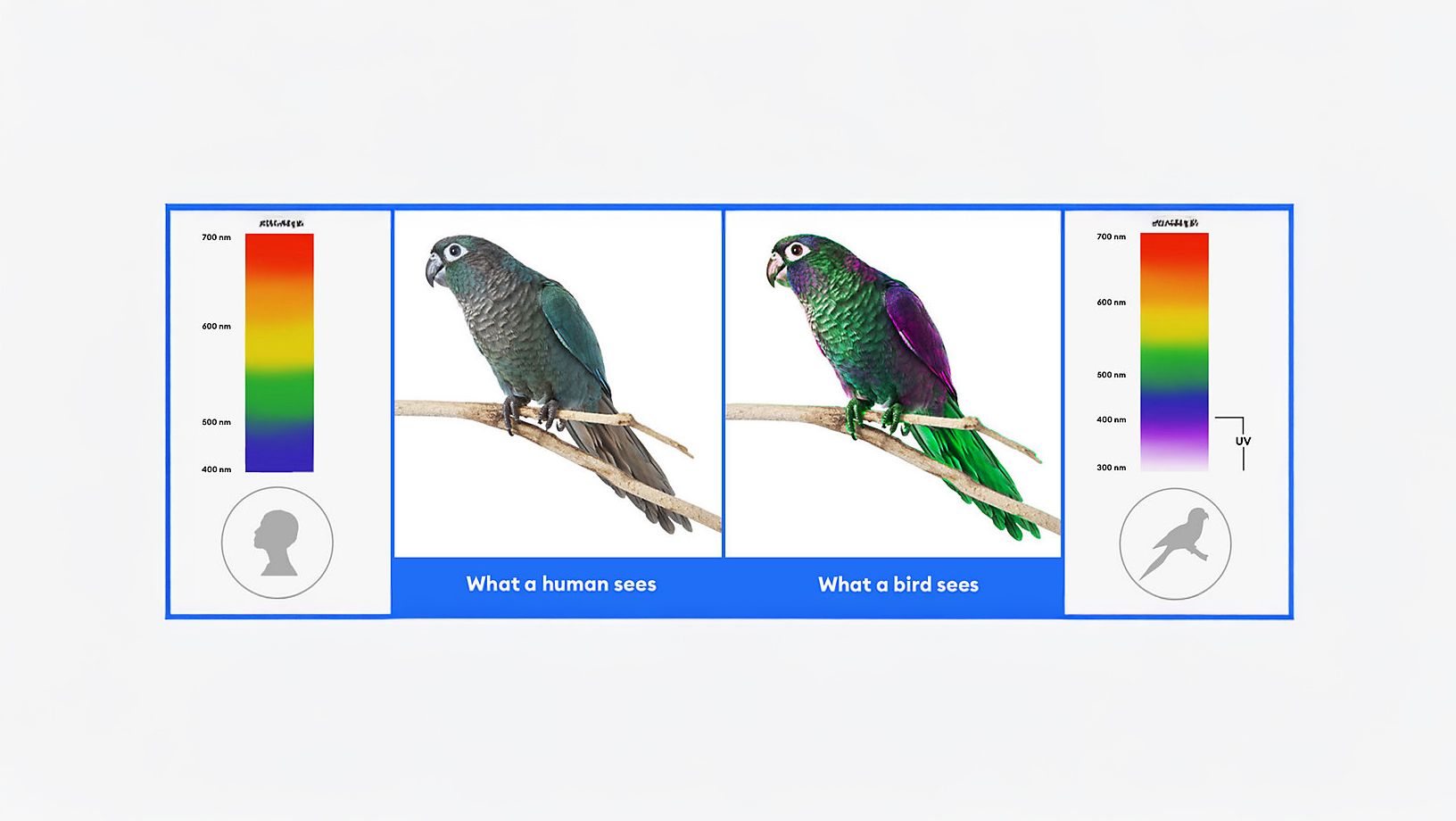Lighting for Pet Birds

In this Article
The right illumination can help your bird thrive and help you see them at their nest
By Gregory Costanzo, DVM and Anibal Armendaris, LVT
By Gregory Costanzo, DVM and Anibal Armendaris, LVT
With their sweet songs, playful personalities and beautiful feathers, birds light up our lives. And with the proper equipment you can light up birds’ lives, providing them full-spectrum lighting with UV to support their health and well-being.
Do pet birds need special lighting?
It’s important to understand that birds kept in our homes are vastly dierent than our cat and dog companions. Birds have evolved both anatomically and physiologically to thrive in their native environments rather than human households. While many species have been bred as pets for several generations, they have still maintained the same basic needs and behaviors as their ancestors.
Recently, experts in avian science have identied new peculiarities and adaptations that were never considered before for birds in domestic habitats. Full-spectrum light exposure, with ultraviolet (UV-B) light has been known to be physiologically necessary for proper vitamin and mineral metabolism in mammals, amphibians, reptiles. That same principle has been identied as important for proper nutritional development in birds, but it is also tremendously important for their behavioral wellbeing.
How does full-spectrum lighting improve a pet bird’s health and well-being?
Most pet birds originate from the tropics, where days are long and natural light is readily available. Full-spectrum lighting mimics sunshine by incorporating a variety of wavelengths within the UV spectrum.
UV-A is most easily described as the visible ultraviolet spectrum (visible light between 320-400 nm). UV-B is not a visible wavelength (at least not by most known species), but it does have more energy (280-320 nm) and is generally known as what causes sunburn in humans. For humans, it is well known that UV-B is important in low doses to allow for adequate Vitamin D synthesis. Similarly, in birds, UV-A and UV-B exposure play an integral role in adequate nutritional absorption/metabolism and behavioral health.
Genetically speaking, birds are not too distantly separated from reptiles. Like reptiles, birds depend on concentrated levels of Vitamin D and calcium to thrive. Until recently, it was thought the necessary levels of vitamins and minerals for birds could be provided exclusively through their diets. However, studies involving a variety of bird species have demonstrated that when compared to their wild counterparts that received natural UV-B exposure there was a noticeable dierence in measurable levels of Vitamin D and ionized calcium (free calcium in its most active form) in their system and they thrived beer. As with reptiles, the full-spectrum with UV-B is necessary for birds to help synthesize Vitamin D and to activate proper calcium metabolism. Not only does UV-B light play an important nutritional benet, but it also stimulates the release of healthy hormones that, if not present, have been linked to undesirable medical and behavioral/psychogenic conditions.
In addition to the metabolic benets, it has recently been determined that birds, like other species, can see an entire segment of the UV-A spectrum that is not visible to the human eye. Birds’ eyes are tetrachromatic, which means that they can see around 100 million colors (humans can only see 1 million) but only if exposed to the right levels and spectrum of UV-A. This evolutionary adaptation is thought to have developed to enable birds to navigate beer and identify mates, food, and danger.
To further illustrate this concept, consider that humans have three channels that perceive color, while birds (like other species) have four. This means that birds see with an even higher denition of reality, vibrance, and colors that will never be visible to humans without assistive technology. While it’s not completely necessary for birds that live in human homes, the UV-A in a full-spectrum light can give your bird an increased level of behavioral health that was not previously considered in bird keeping. When done correctly, your birds will be happier and healthier than ever before.
What full-spectrum lighting is right for your bird?
There are a variety of full-spectrum bulb strengths and shapes that combine UV-A, UV-B, and even warmth. The most important thing is to observe the recommended safety guidelines provided by the manufacturer, including intended uses for the xture and bulb, minimum distance between the bulb and your bird, and the recommended length of photoperiod (how long you leave the light on).
To get you started, PetSmart has selected two versatile products—the Puresun Mini Kit and Puresun Compact Kit—from Arcadia, an industry leader and innovator in bird and reptile lighting. These complete lighting systems are easy to use with a contemporary look. Please follow the instructions for placing the lighting to ensure that your bird receives the optimal benets.
These lighting kits can be used to improve the health and wellness of birds including:
Budgerigar/Common Parakeet
Cockatiel
Canary
Canary-winged Parakeet/Bee Bee
Diamond Dove
Gouldian Finch
Lineolated Parakeet
Ring-necked Dove
Society Finch
Zebra Finch
Cockatiel
Canary
Canary-winged Parakeet/Bee Bee
Diamond Dove
Gouldian Finch
Lineolated Parakeet
Ring-necked Dove
Society Finch
Zebra Finch

